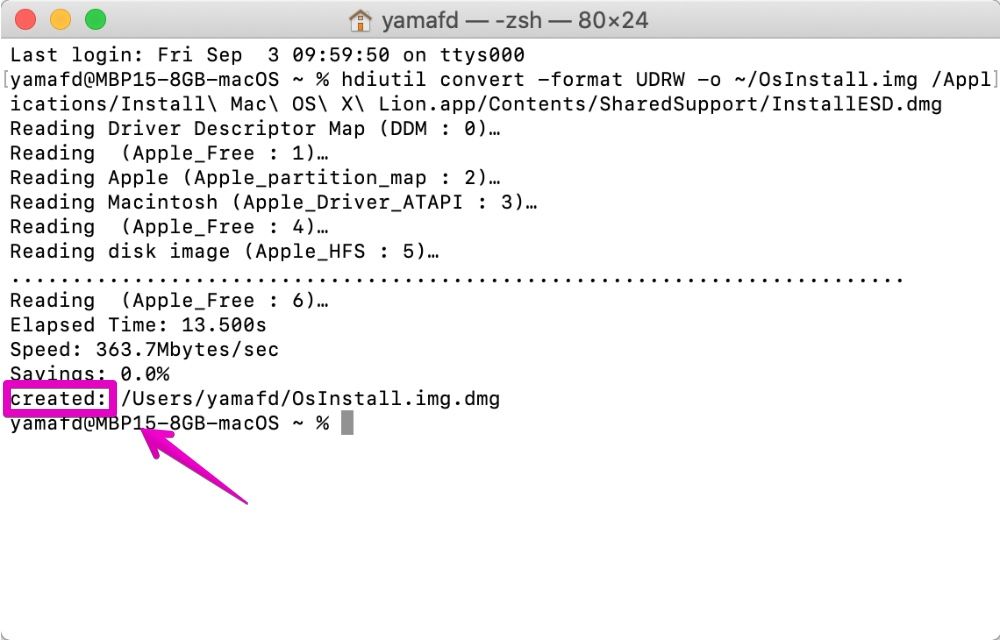

- #Create mac os install usb terminal how to#
- #Create mac os install usb terminal full#
- #Create mac os install usb terminal password#
The createinstallmedia method is the easiest if you’re at all comfortable using Terminal, it’s the approach that I recommend you try first. I’ve come up with three ways you can create a bootable OS X install drive for the Yosemite: using the installer’s built-in createinstallmedia tool using Disk Utility or performing the Disk Utility procedure using Terminal. If you don’t, you’ll have to redownload the installer from the Mac App Store before you can create a bootable installer drive.Ĭreate the Yosemite install drive: The options

If you plan to use that installer on other Macs, or-in this case-to create a bootable drive, be sure to copy the installer to another drive, or at least move it out of the Applications folder, before you install. As with the Mavericks installer, if you leave the Yosemite beta installer in its default location (in the main Applications folder) when you install OS X 10.10, the installer will delete itself after the installation finishes. Like all recent versions of OS X, Yosemite is distributed through the Mac App Store. And if your Mac is experiencing problems, a bootable installer drive makes a handy emergency disk.Īs with previous versions of OS X, it’s not difficult to create a bootable installer drive from the Yosemite installer, though the processes have changed slightly since Mavericks. If you want to erase the drive on a Mac before installing Yosemite, or start over at any time, you can use a dedicated installer drive to boot that Mac, erase its drive, and then install the OS clean and restore whatever data you need from a backup. I recommend making one for Yosemite, on an external hard drive or USB thumb drive, for many of the same reasons I recommend making a bootable Mavericks installer drive: If you want to install Yosemite on multiple Macs, using a bootable installer drive can be more convenient than downloading or copying the entire installer to each computer. Modern, downloadable versions of OS X create a recovery partition on your drive, but it’s always a smart idea to make your own bootable installer drive too.
#Create mac os install usb terminal password#
Now you can boot up from your newly bootable disk and either Install OSX10.9 on another device or use the Terminal/Disk Utility or Firmware Password Utilities on another device.Back in the day when we bought OS X on discs, as long as you kept that disc, you always had a bootable installer just in case.
#Create mac os install usb terminal full#
Remove the existing Packages alias link from the newly restored image rm /Volumes/OS\ X\ Base\ System/System/Installation/PackagesĬopy the full OSX Mavericks Packages over to the new image….takes a while cp -R /Volumes/OS\ X\ Install\ ESD/Packages/ /Volumes/OS\ X\ Base\ System/System/Installation/PackagesĪnd there it is! – to eject the new bootable USB OSX Mavericks 10.9 disk ‘cd’ to home and eject cd ~/ hdiutil eject /Volumes/OS\ X\ Base\ System/ This will change ‘ BootDisk‘ to ‘ OS X Base System‘ This puts you back in the Finder in front of the newly mounted InstallESD.dmg, go back to Terminal and clone the BaseSystem.dmg to the remote USB drive sudo asr restore -source /Volumes/OS\ X\ Install\ ESD/BaseSystem.dmg -target /Volumes/BootDisk/ -erase -noverify Swap to the newly mounted image cd /Volumes/InstallESD.dmg Mount the InstallESD.dmg buried deep in the app hdiutil attach /Applications/Install\ OS\ X\ Mavericks.app/Contents/SharedSupport/InstallESD.dmg -noverify Just for the crazy ones……after Mavericks is downloaded….and again this assumes you external disk is named BootDisk


#Create mac os install usb terminal how to#
If you want all to return back to normal and hide the system files run a couple more commands in the Terminal defaults write AppleShowAllFiles FALSE killall Finder How to create the OSX 10.9 Mavericks Bootable Drive just via Terminal


 0 kommentar(er)
0 kommentar(er)
